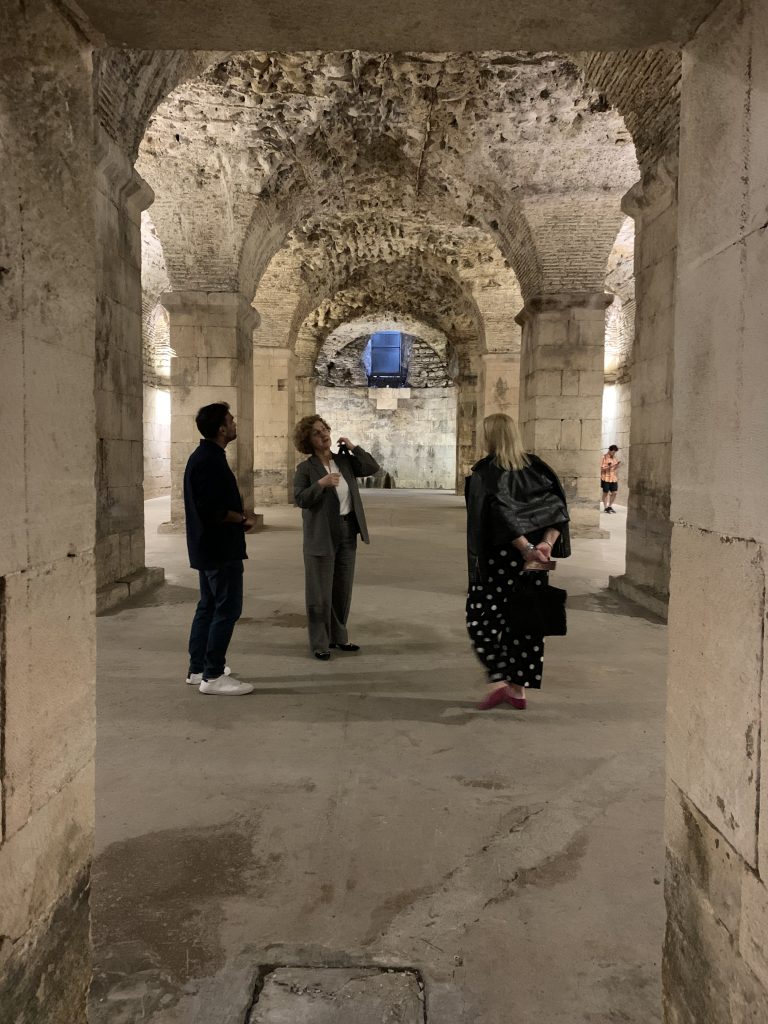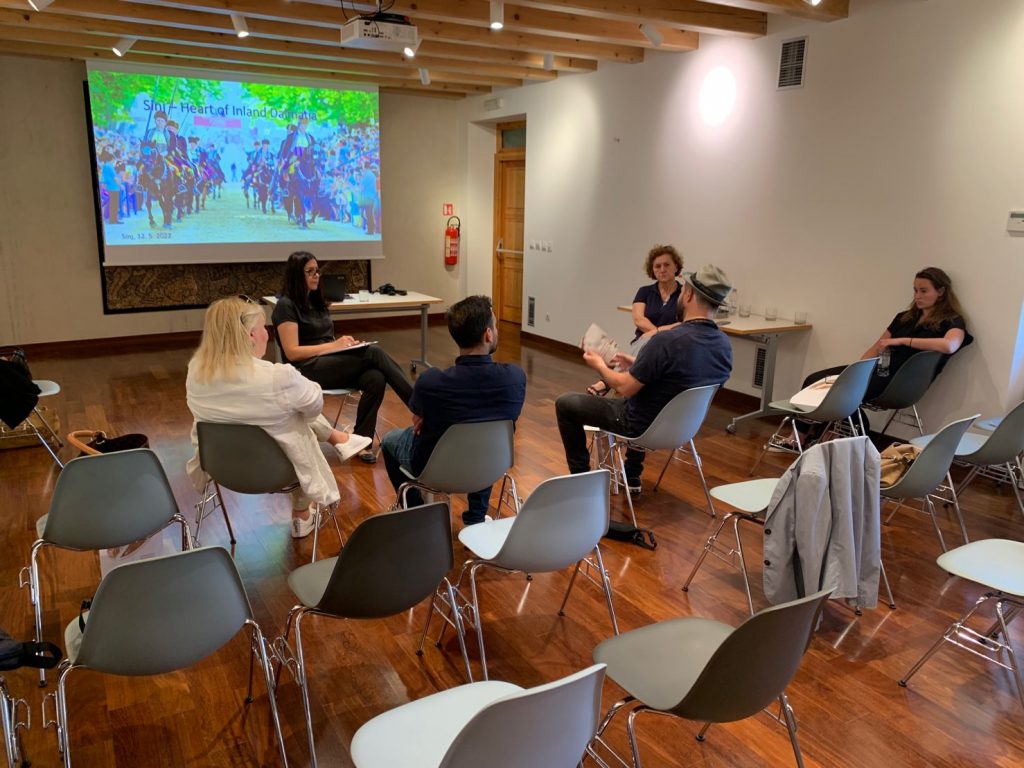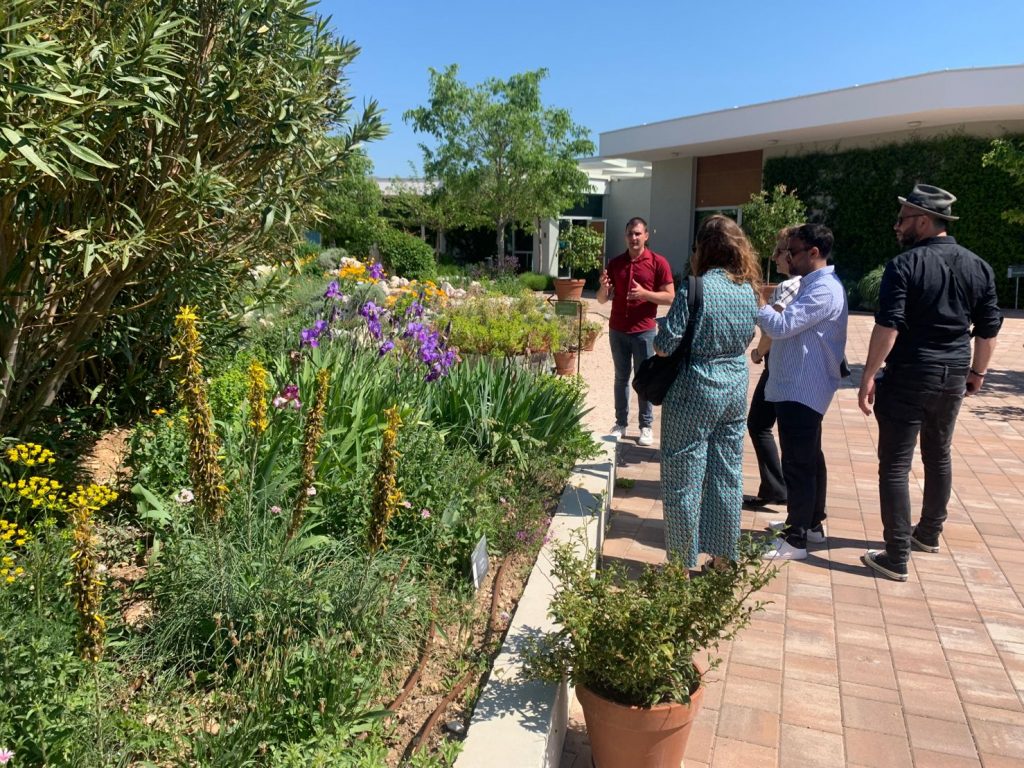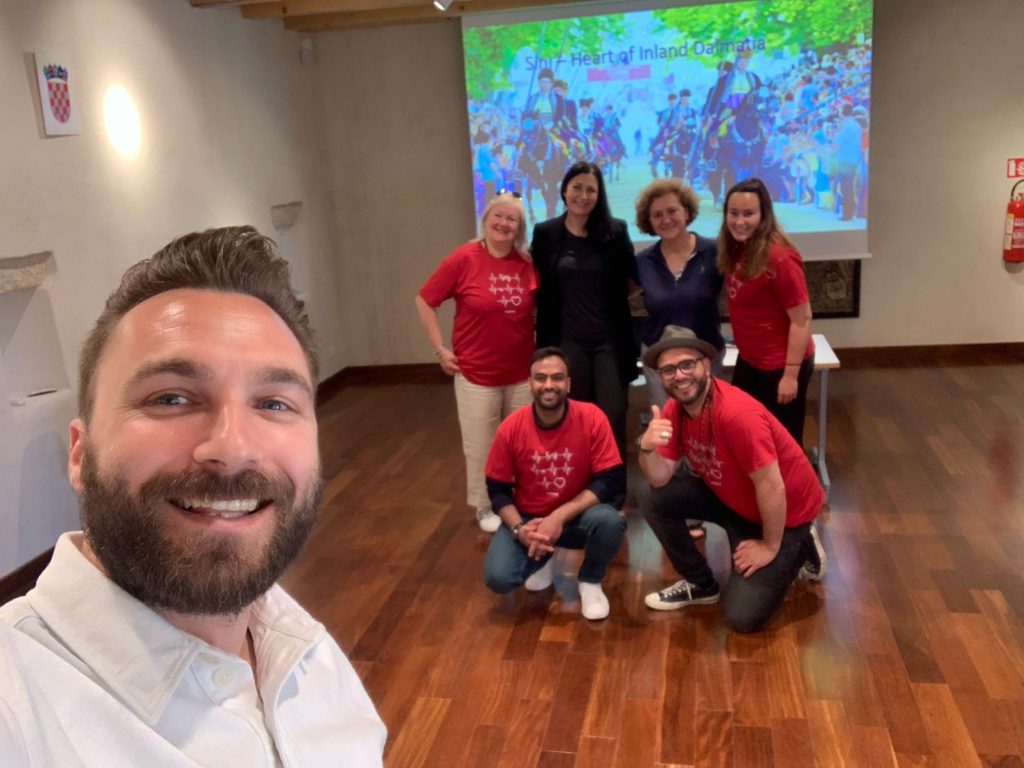Between the 11th and 13th of May, Split Metropolitan Area Living Lab hosted the stakeholders from the Rotterdam and Vicenza Living Labs. Split Metropolitan Area consists of micro destinations in the coastal area, which are currently the hub, and rural regions that, although rich with heritage, experience significantly lower tourism demand. As tourism in the Split centre has reached its peaks organising alternative visitor experiences, i.e. flagship attractions, to pull in visitors, meet the needs of residents and develop more robust tourism activities in such places could be a solution.
As announced in the exchange preparation meetings, the program in Split focused on challenges associated with the marketing of sustainable cultural tourism, more precisely, the sustainable interpretation of both tangible and intangible cultural heritage. The main idea behind the program was to showcase two distinctive approaches (public vs private; more vs less successful) toward the organisation of cultural tourism visitor experiences in two distinctive yet neighbouring destinations and discuss the challenges and opportunities with visiting stakeholders.
The exchange program began on 11 May when visitors had the opportunity to enjoy the guided tour of the Diocletian Palace in the Split town centre (Photo 1). This was also an opportunity for hosts and visitors to meet and discuss the expectations from the two-day workshop in an informal atmosphere.
The exchange program began on 11 May when visitors had the opportunity to enjoy the guided tour of the Diocletian Palace in the Split town centre (Photo 1). This was also an opportunity for hosts and visitors to meet and discuss the expectations from the two-day workshop in an informal atmosphere.

On 12 May at 9 AM, hosts and visitors meet at the Faculty of economics, business and tourism to meet the Faculties management. Following a brief introduction, we visited the city of Sinj, where we were welcomed in «Alkarski dvori» by Ms Monika Vrgoč, the DMO manager. Ms Vrgoč introduced tourism development in Sinj while particularly focusing on the disparity between the potential for cultural tourism development and what has been done. Ms Vrgoč outlined the challenges associated with visitor experience design, sustainable interpretation and communication with visitors. During the presentation, the visitors posed questions. After the presentation, Ms Vrgoč took us to visit the Museum of Sinjska Alka, where she organised guided tourism and the projection of the documentary movie on the Alka knight tournament and the history of Sinj. Following, we visited the local church, i.e. sanctuary of the Miraculous Madonna of Sinj, and the local site with the roman monument representing what seems to be the first evidence of football in Europe, as recognised by FIFA. After the lunch break, Ms Vrgoč organised a visit to the recently built interpretation centre, which has not been opened for visitors due to the lack of consensus within the local government regarding who should take responsibility for management. This was followed by a short visit to the horse centre. We went back to «Alkarski dvori» where we discussed the challenges that were raised and questions that emerged during the visit (Photo 2).

On 13 May at 9 AM, we visited Stella Croatica privately owned experience centre in Klis. The centre is focused on the interpretation of Mediterranean customs, traditions and natural heritage. The place involves the (1) a small factory where dominantly employed local community members produce selected products (food, cosmetics) from locally grown ingredients; (2) the botanic garden with the majority of typically Mediterranean plants; (3) a distillery outlining the process of the development of cosmetics; (4) olive museum interpretation and education centre showcasing the process of the development of olive oil; (4) concept store; and (5) outlay of the traditional Dalmatian stone village where visitors can explore the village and enjoy the traditional gastronomy. We were welcomed by Mr Marin Jerković, who gave us 3 hours guided tour and explained the history and the vision for the centre’s future, their commitment to conservation, education, and benefit to the local community. The guided tour started in the factory, where visitors could see the production and packaging of some of their products and taste a Fig cake, their most famous pastry. Following, we were taken to the distillery, where Mr Jerković explained the process of the extraction of the lavender and immortelle essential oil, which has been used to create many of their product. The tour continued with the exploration of the botanic garden. He took us then to the interactive and educational olive oil museum, where he reflected on the history of olive oil and the extraction of oil from olives and provided some good insights on distinguishing lamp oil from virgin and extra virgin olive oil. The tour continued with a stop at the concept store and a visit to the interpretation of a traditional Dalmatian village. Within the village, Mr Jerković organised the tasting of their product and, after instruction on how to blend the tasts, left us to explore unique tastes for some time. After some 30 minutes, Mr Jerković returned, and the discussion began. While the visitor posed a question on how they plan to increase the number of visitors, Mr Jerković explained how visitor growth is not the primary focus of the experience centre as they are currently satisfied with the numbers. They are focused on diversifying offers and maintaining the quality of experiences. Some good points on market visibility of concept and branding were made.

Indeed, the exchange visit is considered a success as it provides insight into the complexity of the cultural-heritage founded visitor experience design and sustainable interpretation. The main lessons learned could be summarised as follows:
Indeed, the exchange visit is considered a success as it provided insight into the complexity of the cultural-heritage founded visitor experience design and sustainable interpretation. The main lessons learned could be summarised as follows:
- Successful cultural tourism development requires the commitment and partnership of the relevant stakeholders.
- The collaboration between DMOs and other stakeholders is crucial for sustainable experience design and interpretation.
- The development of facilities and infrastructure requires the consensus of the local government and DMOs.
- Cultural tourism businesses need a clear vision of a sustainable future and prioritise value and service quality over volume.
- Sustainable valorisation of the cultural heritage requires emphasising the wellbeing of local communiteis and delivering transformative and memorable visitor experiences.


